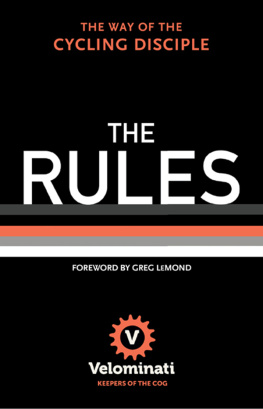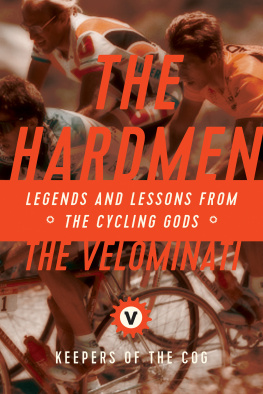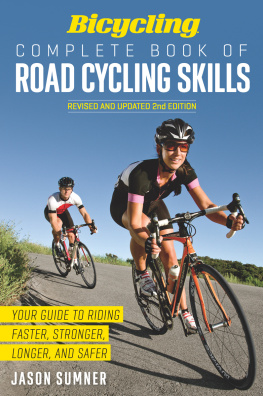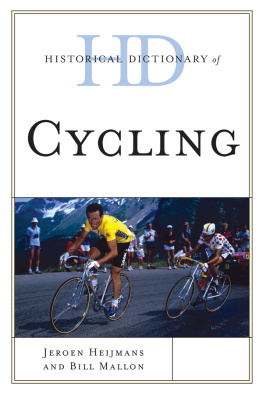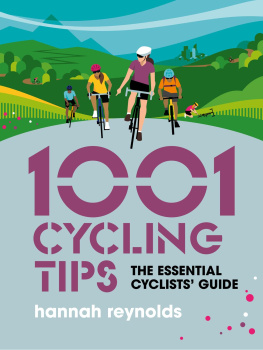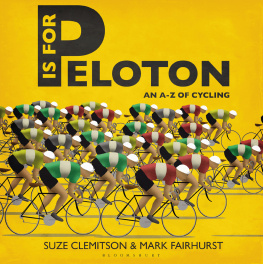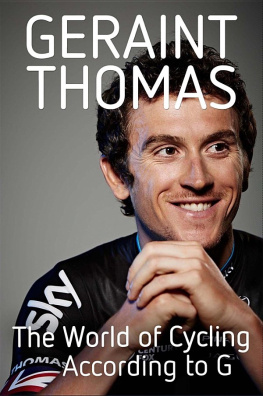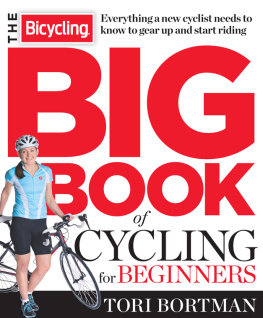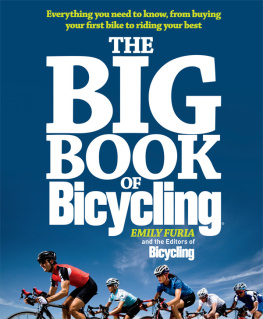
THE RULES
The Way of the Cycling Disciple

Foreword by Greg LeMond

W. W. Norton & Company
New York London
The Rules: The Way of the Cycling Disciple was first published in Great Britain in 2013 by Sceptre, an imprint of Hodder & Stoughton, an Hachette UK company.
The right of Velominati to be identified as the Authors of the Work has been asserted in accordance with the Copyright, Designs and Patents Act of 1998.
Copyright 2014, 2013 by Velominati
Foreword copyright 2014 by Greg LeMond
First American Edition 2014
All rights reserved
For information about permission to reproduce selections from this
book, write to Permissions, W. W. Norton & Company, Inc.,
500 Fifth Avenue, New York, NY 10110
For information about special discounts for bulk
purchases, please contact W. W. Norton Special Sales
at specialsales@wwnorton.com or 800-233-4830
Production manager: Anna Oler
ISBN 978-0-393-24219-5
ISBN 978-0-393-24220-1 (e-book)
W. W. Norton & Company, Inc.
500 Fifth Avenue, New York, N.Y. 10110
www.wwnorton.com
W. W. Norton & Company Ltd.
Castle House, 75/76 Wells Street, London W1T 3QT
// By Greg LeMond
As a young teenager, my goal in life was to be a hotdog freestyle skier. During a ski camp in Vancouver, my instructor Wayne Wong recommended cycling as cross-training. Once I felt the wind in my face riding with my dad in the mountains near our home in Reno, Nevada, my objective quickly changed. I also learned that there were certain rules associated with the sport of cycling, and I hate rules.
The first rule was about age. I won my first eleven races as a fourteen-year-old intermediate, but I couldnt move up because the rules said I was too young to race the juniors, even though I was staying with seniors on training rides.
Then there were rules about gears. Back then youd have an 54x15 gear restriction for intermediates where the juniors were 52x15. Most of the races I entered I was second or third because I didnt have the gear to sprint. For my second year racing, in 1977, I won over half the races I enteredtwenty-seven out of forty-seven including the Junior National Road Championship and the Junior Worlds trials.
But still, I was hooked. My higher education came from the pages of cycling magazines I read at Roland Della Santas shop. I learned about race tactics, training tips, who was winning what and how; I was immediately drawn into this otherworldly sport and was determined to be the best.
To challenge myself, I went to Europe to learn the sport firsthand. I won over there, too, but I also bumped up against new rules. The European traditions were harsh: no ice cream, no sex during the season, no golf, no Mexican food. The list was mind-boggling. They obviously didnt understand that my mind and body needed distraction to perform on the bike.
The biggest rule of all was that bike racing belonged to the Europeans, and no American would ever win the Tour de France. But I work best when anyone tells me I cant do something. I understand that rules are important for some people, but for me theyre just an invitation for anarchy. Rules forced me to think outside my head, and a cyclist must use ones legs, heart and lungs to propel that bike just as much as ones mind.
This is what I like best about Velominati and The Rules . These Rules arent about discouraging young or novice riders. They dont tell you not to play golf or eat ice cream. Instead, these Rules encourage you to get out there, ride your bike and keep riding. They celebrate the bike and the history of the sport. Just like the magazines at Roland Della Santas shop, they teach aspiring riders about the history and culture of cycling. But theyre also sensible enough to understand why a gear restriction on a promising junior can be so frustrating.
In 1978, I sat down and made a list of goals:
Junior World Champion at eight
1980 Olympic gold medalist
World Champion at twenty-two
Tour de France winner at twenty-five
Thanks to the old rules of cycling, which inspired me to work harder, I achieved three of those four goals (no thanks to the U.S. boycott of the Moscow Olympics). So now Ive made a new list.
Here are My Rules:
Rule #1
Dont let people tell you what you cant do.
Rule #2
Dont follow the herd; challenge convention.
Rule #3
Must ride like Eagle, feeling like Superman, one day per week on bike, or training program is shit. Still the most relevant training advice, from my junior coach Eddy B.
Rule #4
Be a skeptic.
Rule #5
Dont take drugs to keep up or win.
Rule #6
Cycling is about challenging yourself and learning, not just beating others at any cost.
Rule #7
Dont allow a dictator to ruin a sport.
Rule #8
Stand up to bullies.
Rule #9
Some of the greatest races are won on little to no sleep.
Rule #10
The race is never over until the finish line.
Golden Rule
Treat people as you wish to be treated.
As you continue cycling youll probably develop your own ways of being inspired. You might even develop your own rules. But no matter what you do, keep pedaling. And dont forget Rule #5.
Greg LeMond lives in Medina, Minnesota, and recently celebrated his thirty-third wedding anniversary. His closet holds three yellow jerseys and two rainbow jerseys, and his three children all live nearby. He recently relaunched his cycling company and is enjoying life on the bike once again. Follow his journey at www.greglemond.com .
Cycling is a mighty sport with a rich and complex history. Every racer, company, piece of kit and component has a legend or story behind ita reason to be passionate for its existence. In many cases it also has a personal and nostalgic connection to our lives.
While steeped in tradition, it is also fiercely modern and seeks advancement through technology and science, a fact that serves only to deepen its complexity.
From this fragile balance between tradition and advancement comes a longstanding sense of etiquette. The modes of acceptable behavior for the Cyclist have evolved alongside the sports elements of danger and the necessary dependence on fellow riders, which produce a complex web of what is and what is not acceptable, spanning the spectrum from the purely aesthetic to the purely functional.
We are the Velominati, sacred Order of the Cycling Disciple. We spend our days poring over the essence of Cycling to understand how it makes up the sports colorful fabric. This is the Velominatis raison dtre.
La Vie Velominatus is a term that the Velominati use to express the Life of the Cycling Disciple: one who holds the sport, its history, its culture, its etiquette and its practice in a nearly religious context. La Vie translates from French into English as the life, but to refer only to the life is to focus on just one facet of its meaning; it is to ignore the community of the many like-minded souls with whom we share this beautiful experience.
A life is for the individual; the Way is for the collective. This is the Way of the Cycling Disciple.
La Vie Velominatus is centered on passion fueled through five principal aspects.
First, we believe that the best way to become a better Cyclist is to ride your bike as often as possible, as seriously as possible.
Next page
